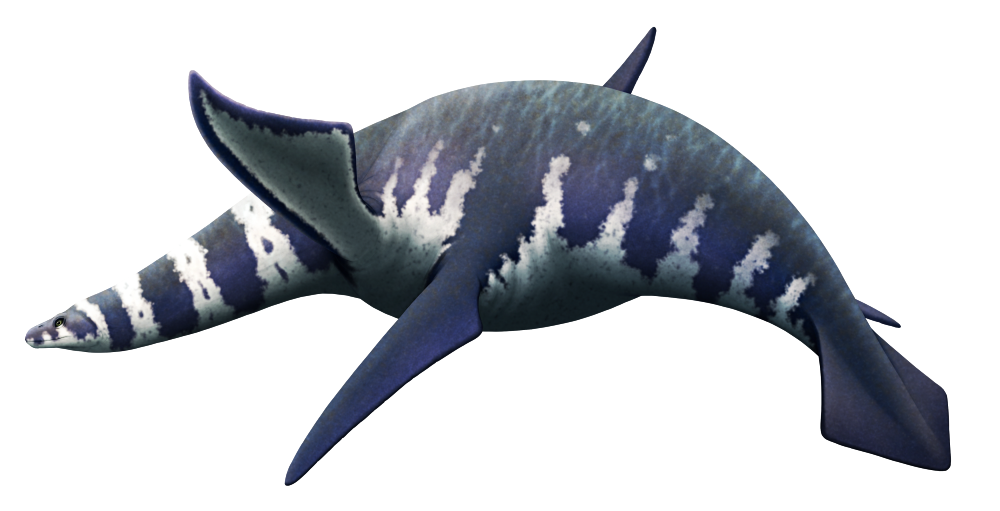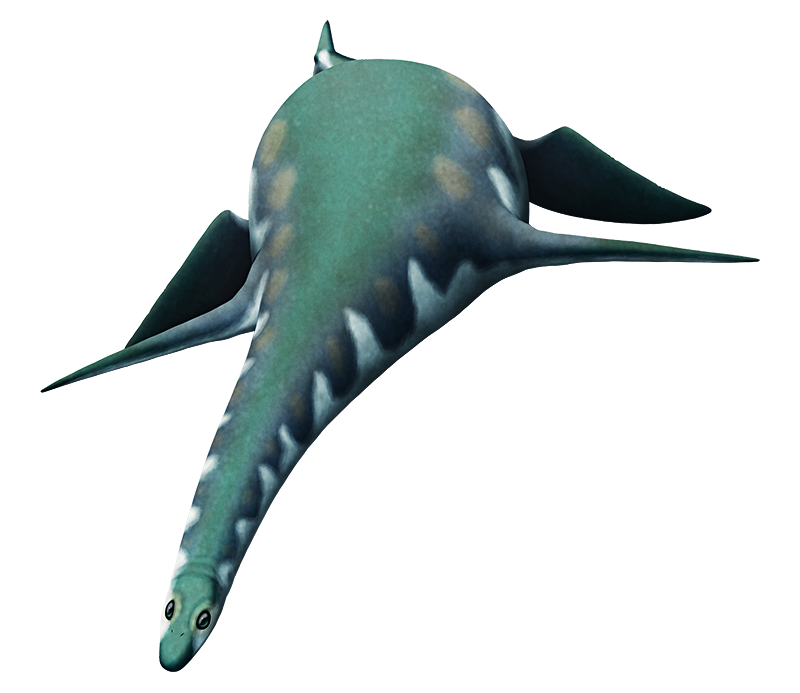Seeleyosaurus guilelmiimperatoris here was a smallish plesiosaur (about 3.5m long / 11’6″) found in Germany during the early Jurassic, about 182 million years ago.
And back in the 1890s, a specimen of this species was discovered with soft tissue impressions showing a diamond-shaped tail fin.
But despite us knowing about plesiosaur tail flukes for such a long time, they’re surprisingly under-represented in reconstructions, never seeming to have become associated with the popular image of these animals in the same way that early pterosaur’s tail vanes did. It doesn’t help that no other direct impressions of plesiosaur tail fins have ever been found, or that the Seeleyosaurus specimen’s soft tissue got painted over at some point in the mid-1900s, making it incredibly difficult to study without causing further damage.
(Perhaps modern non-invasive scanning techniques could be able to see under the paintjob, but as far as I’m aware nobody’s tried that yet.)
These tail fins are usually assumed to have been vertically oriented like those of other aquatic reptiles, moving side-to-side and acting like a rudder. However, there’s also a hypothesis that their fins might have actually been horizontal more like those of modern cetaceans and sirenians, based on several anatomical quirks – such as their tail regions being very wide and flat at the base, and the vertebrae at the tip being unusually pygostyle-like, very different from the way the tail bones of vertically-finned reptiles look.



